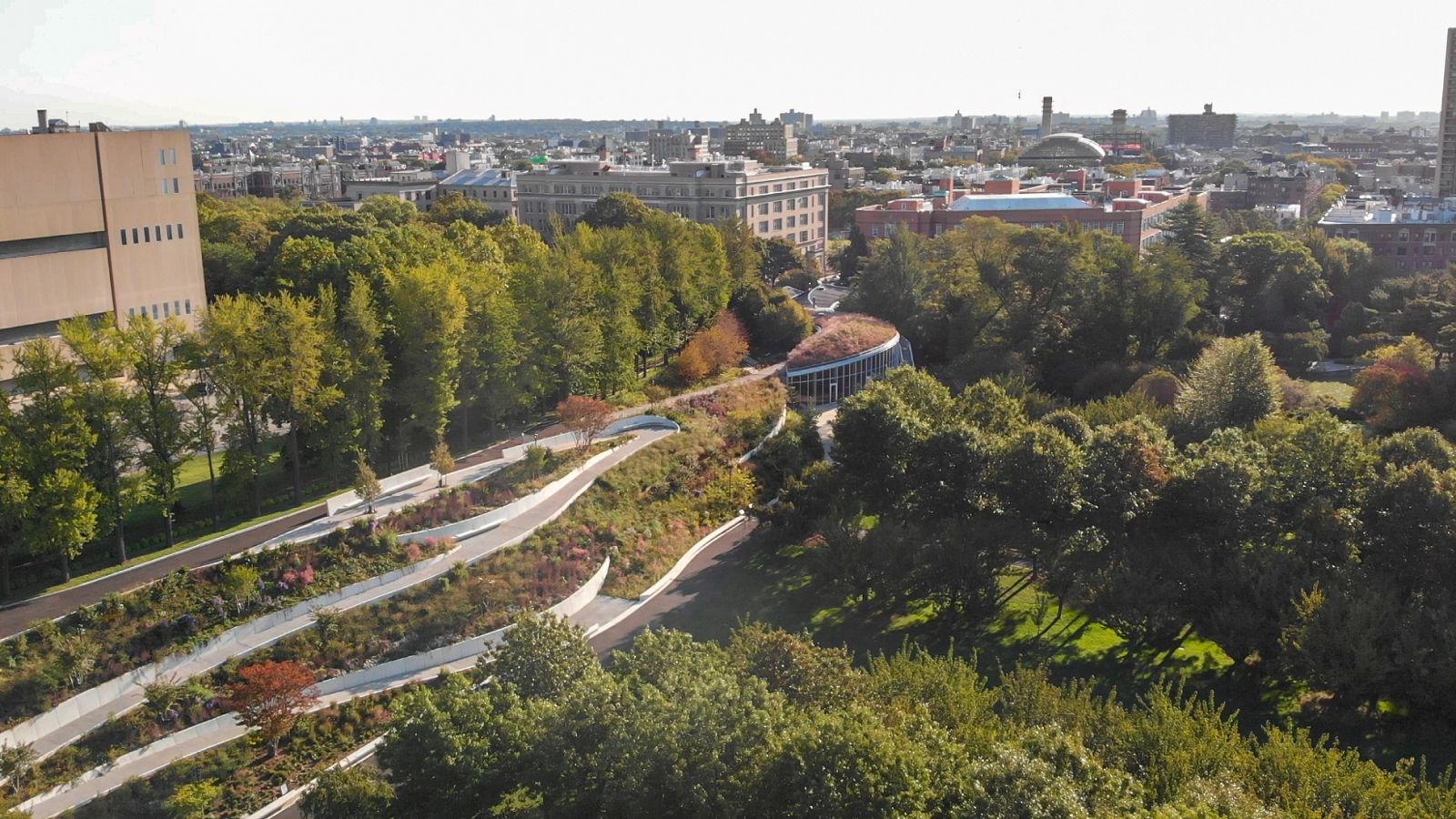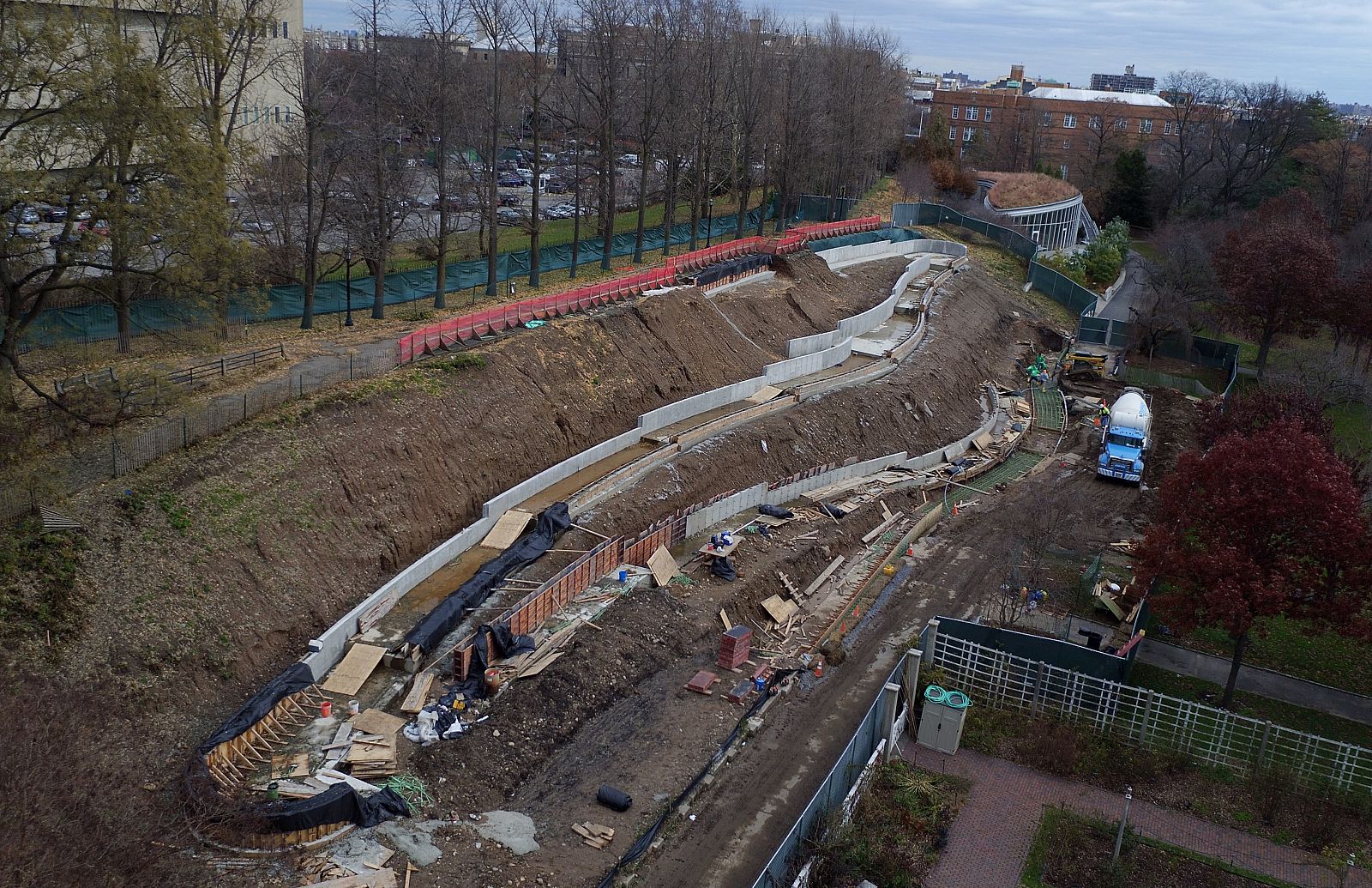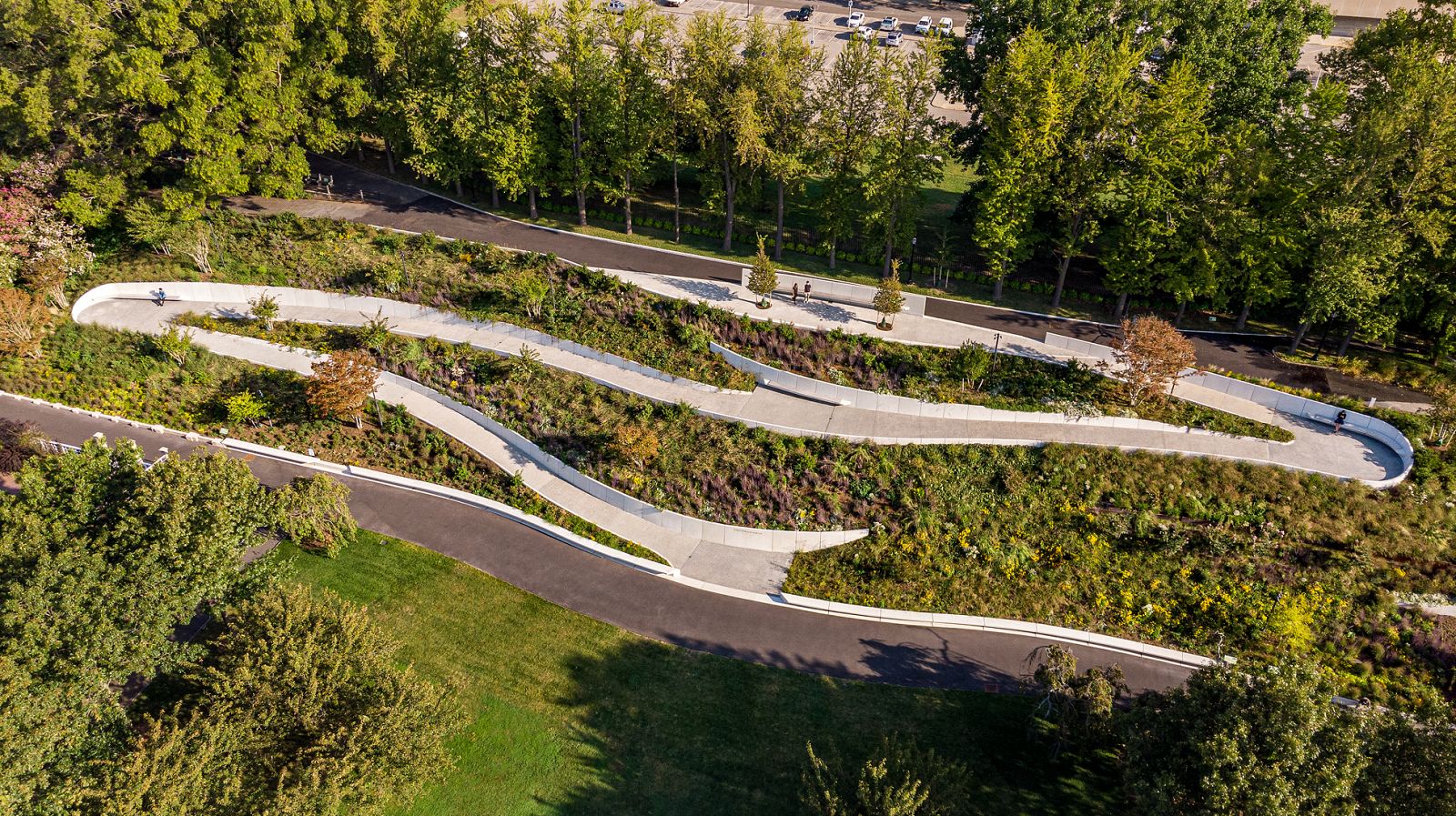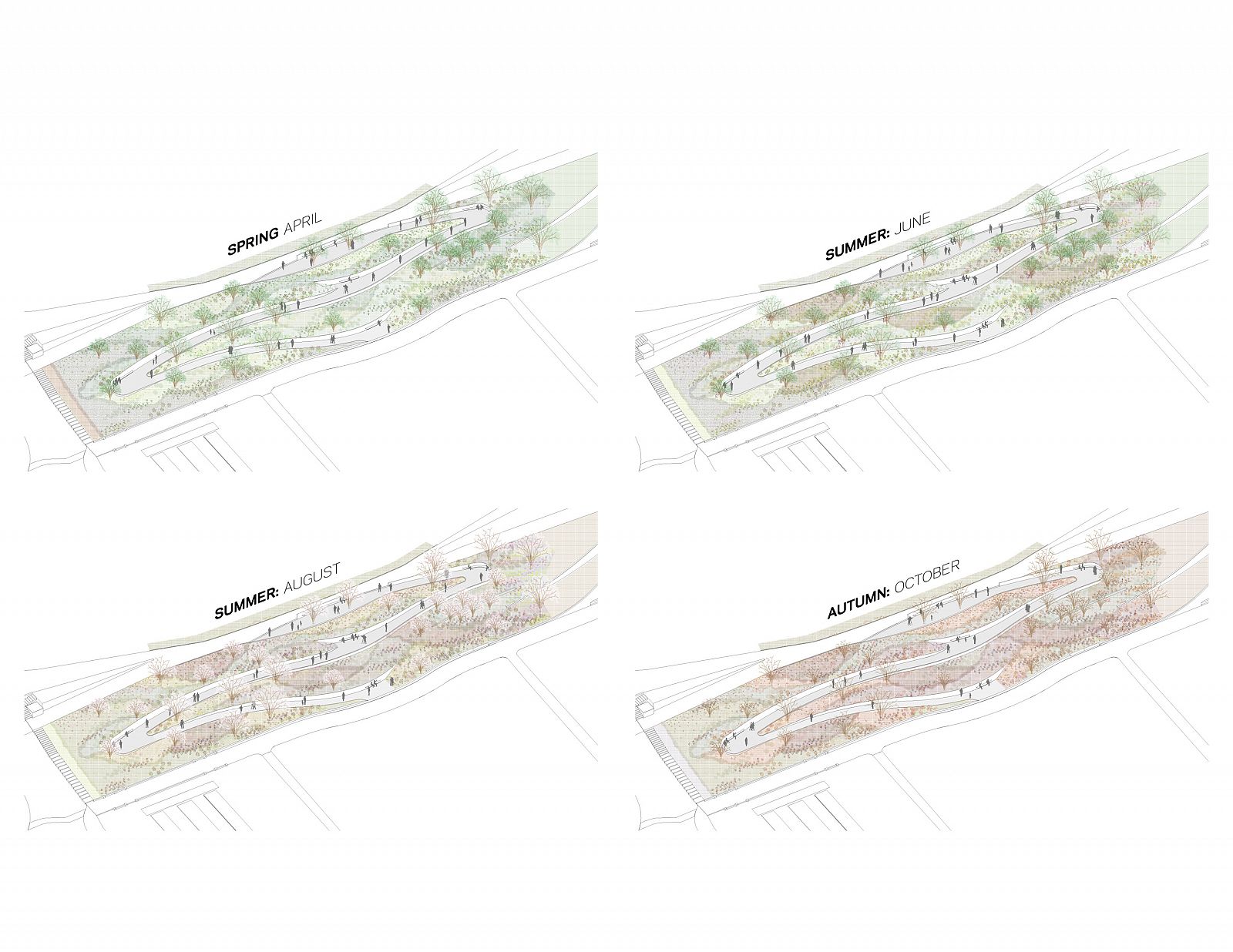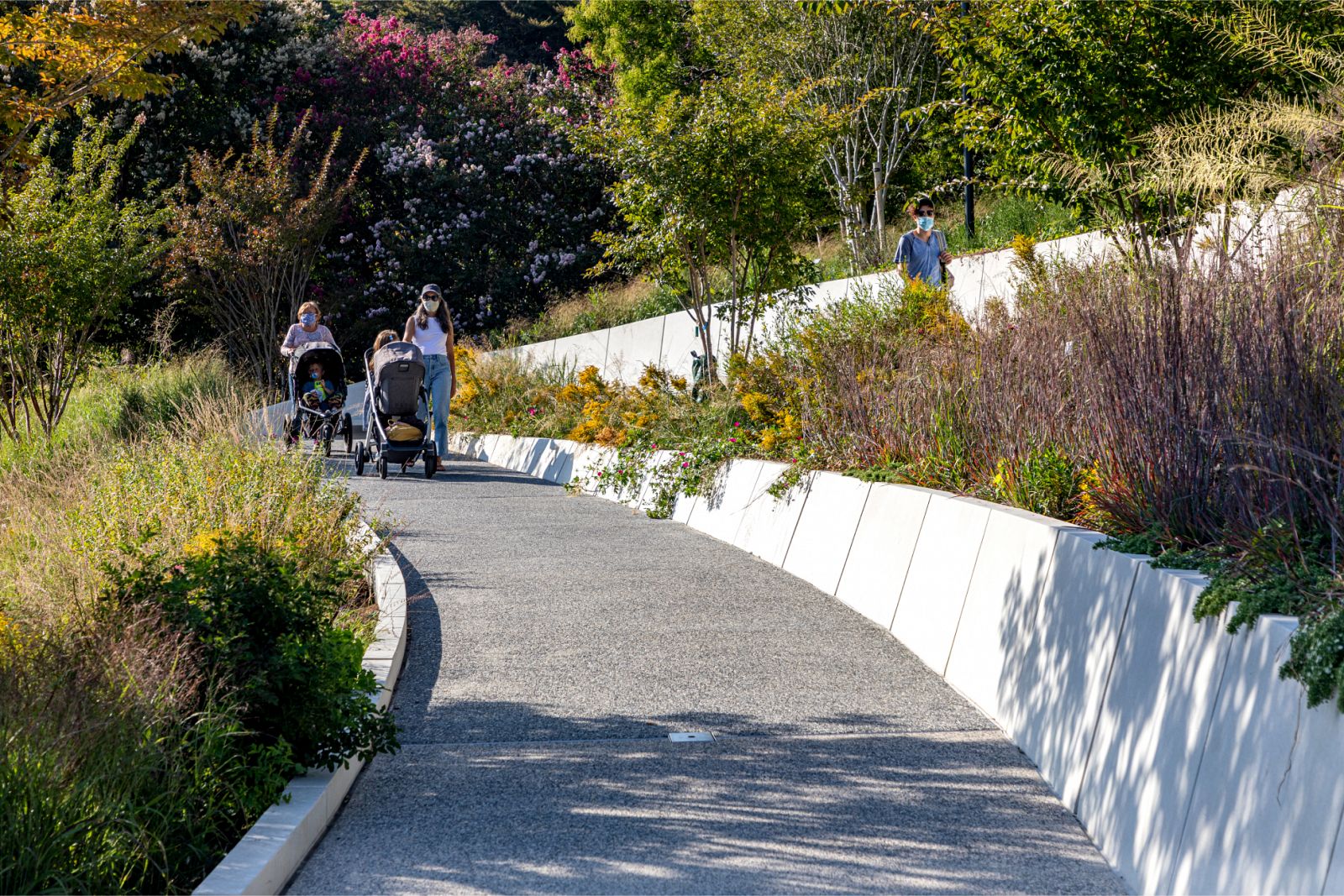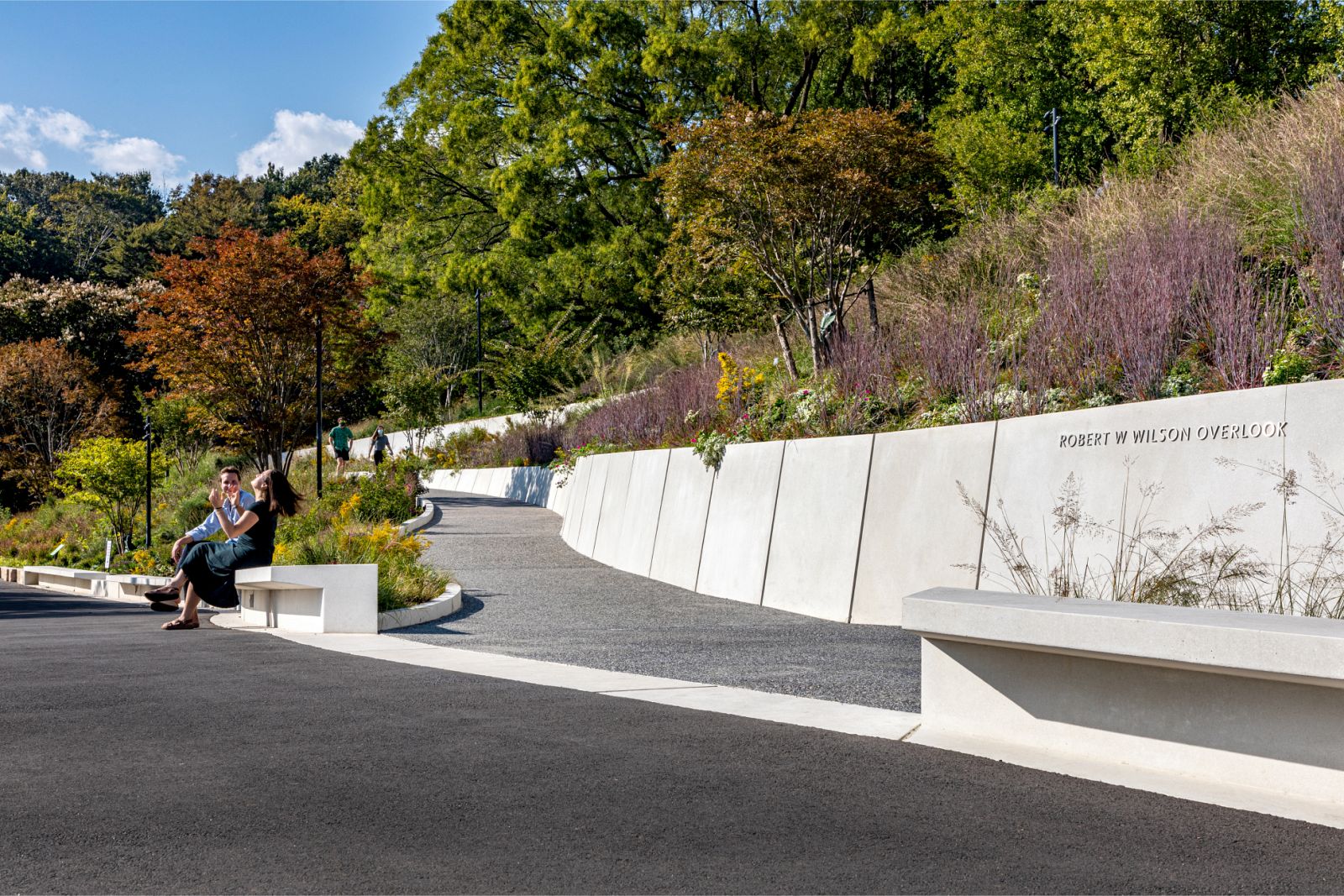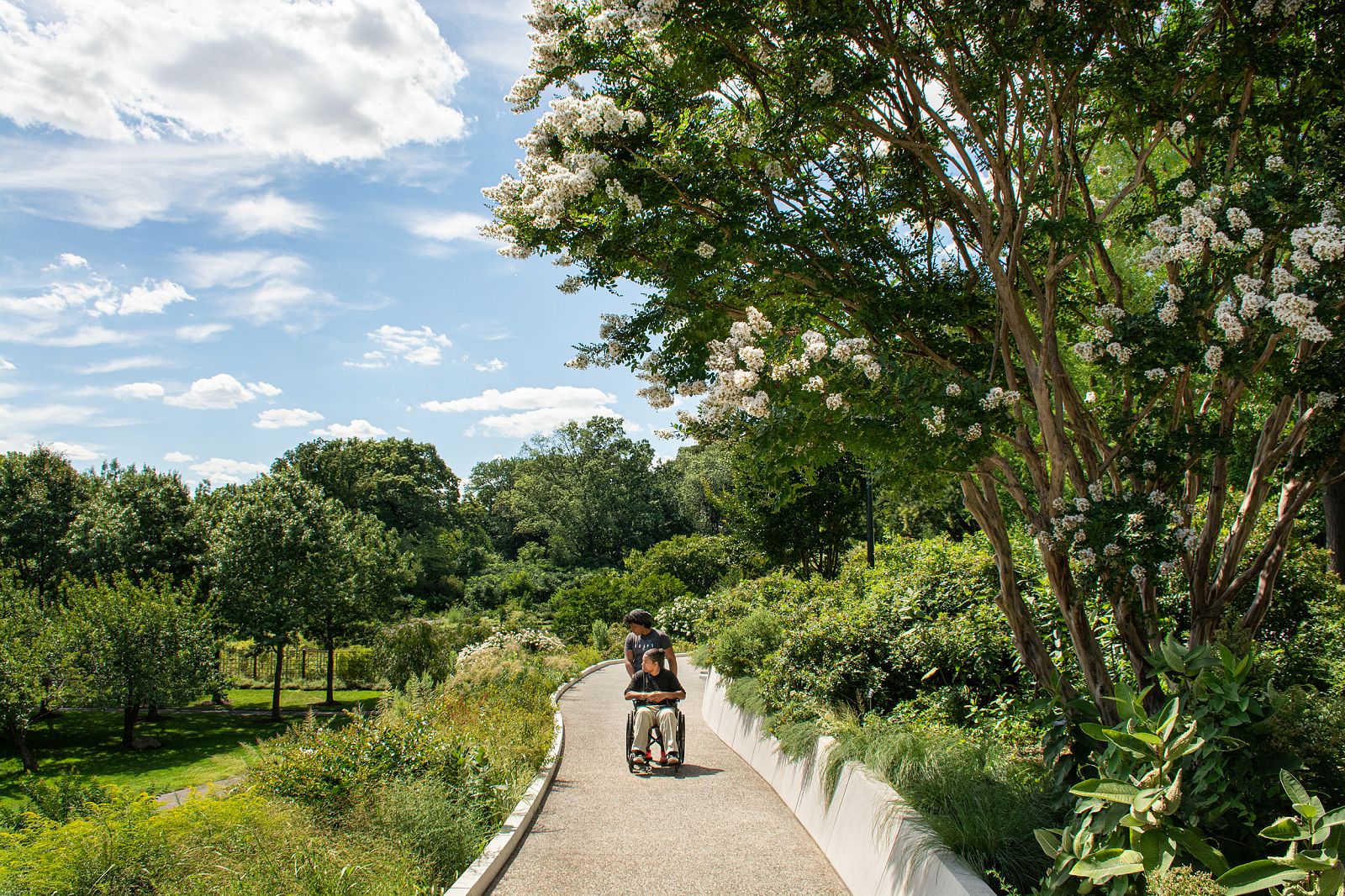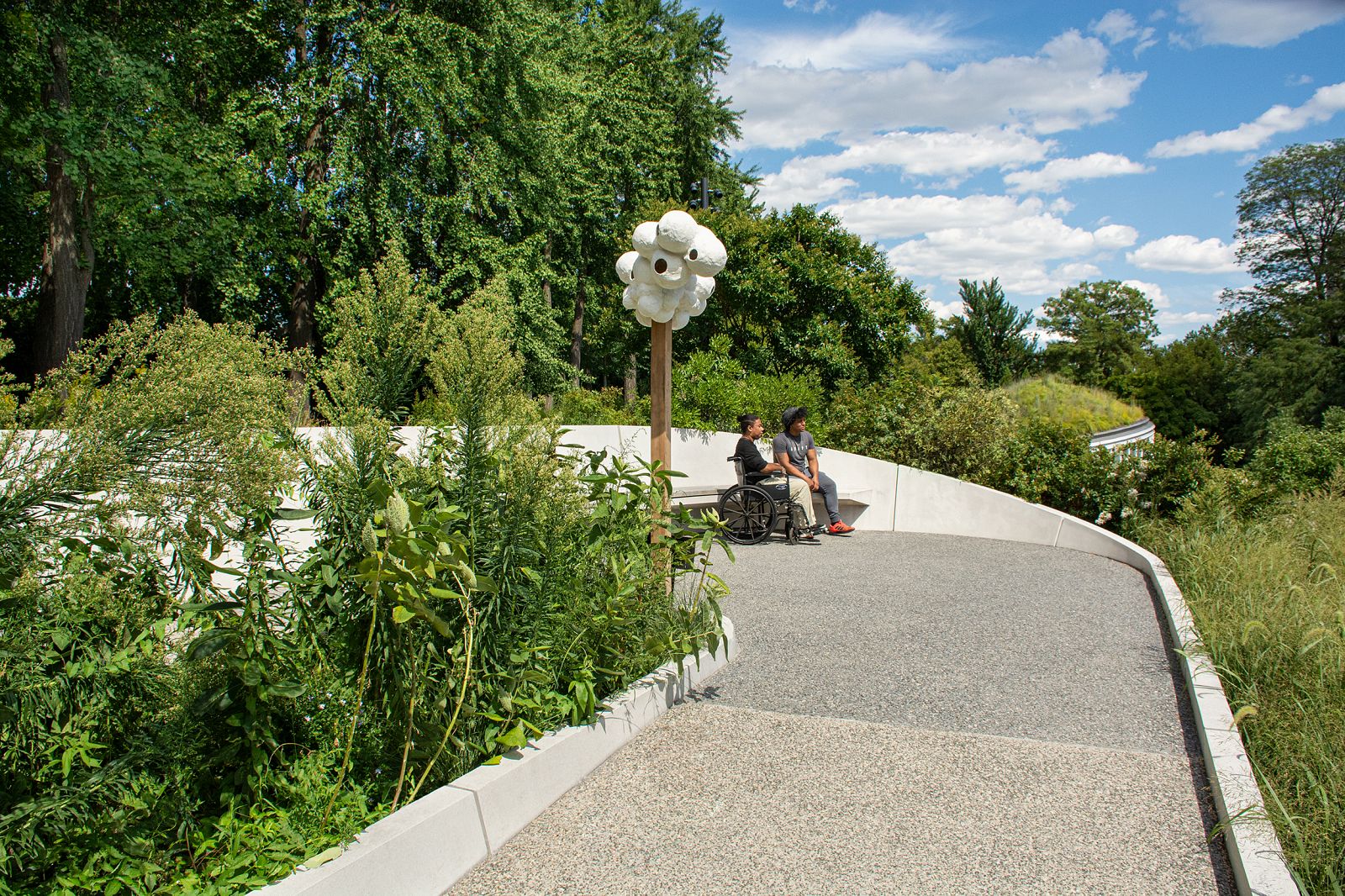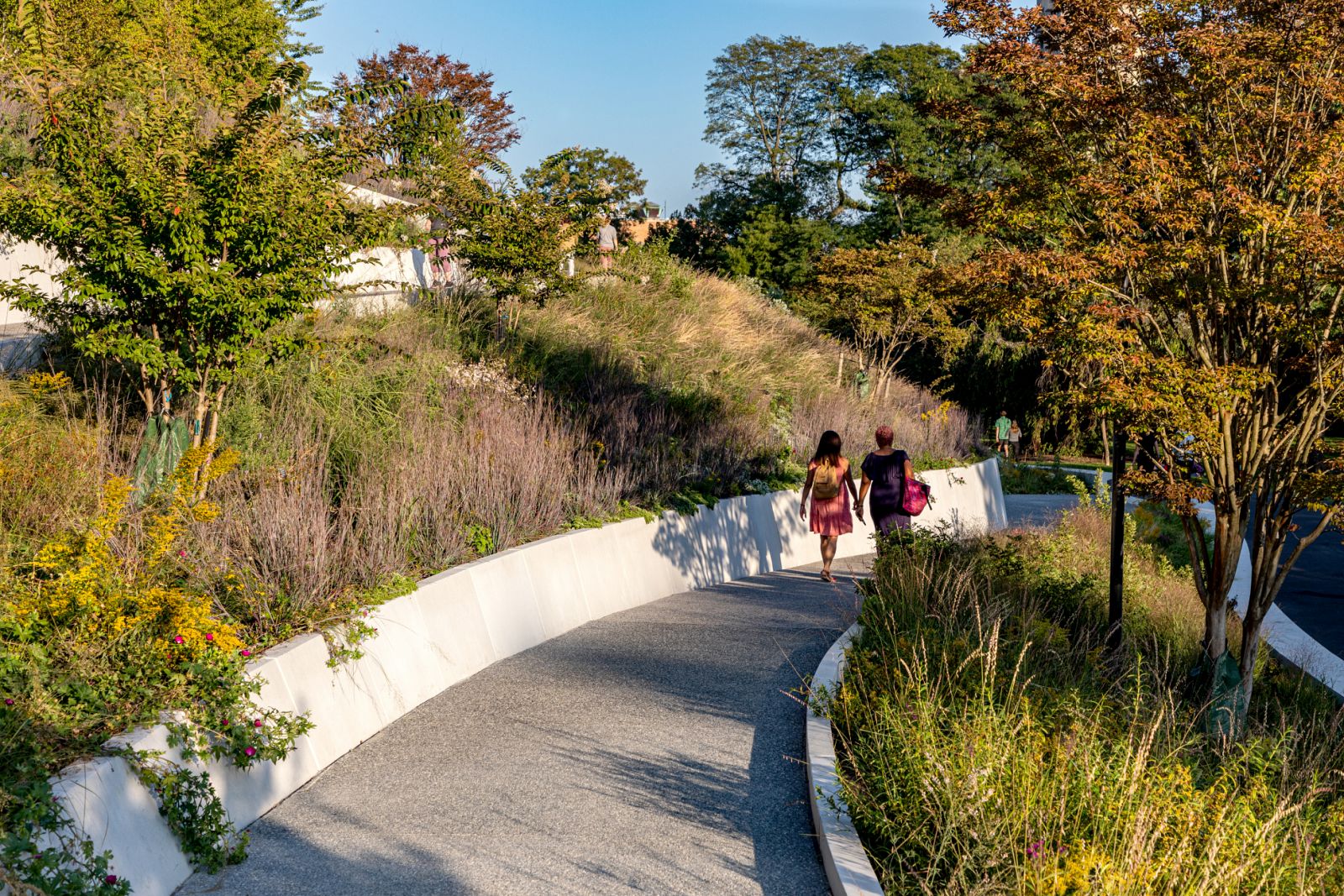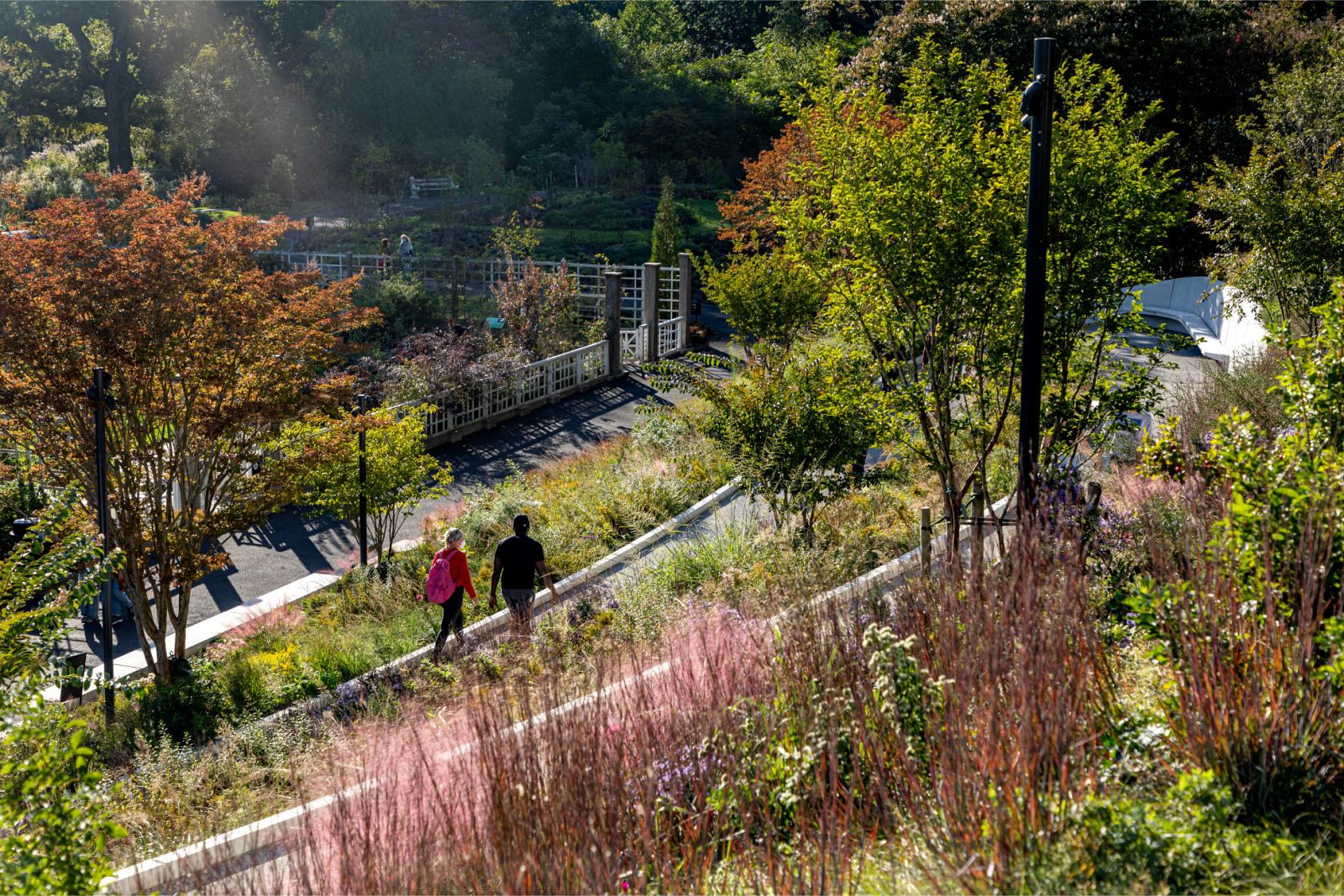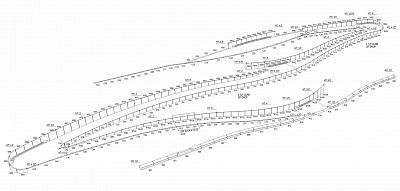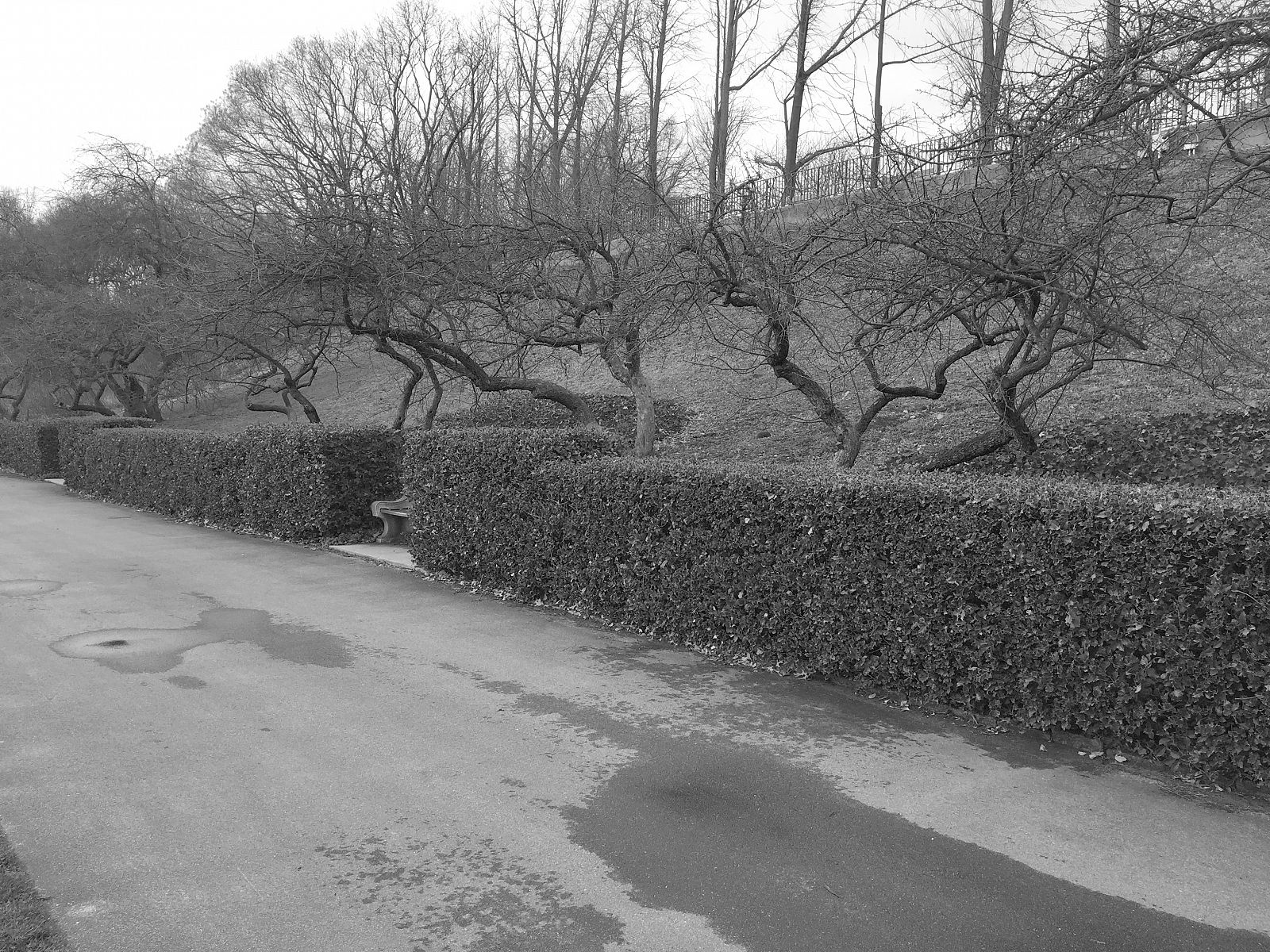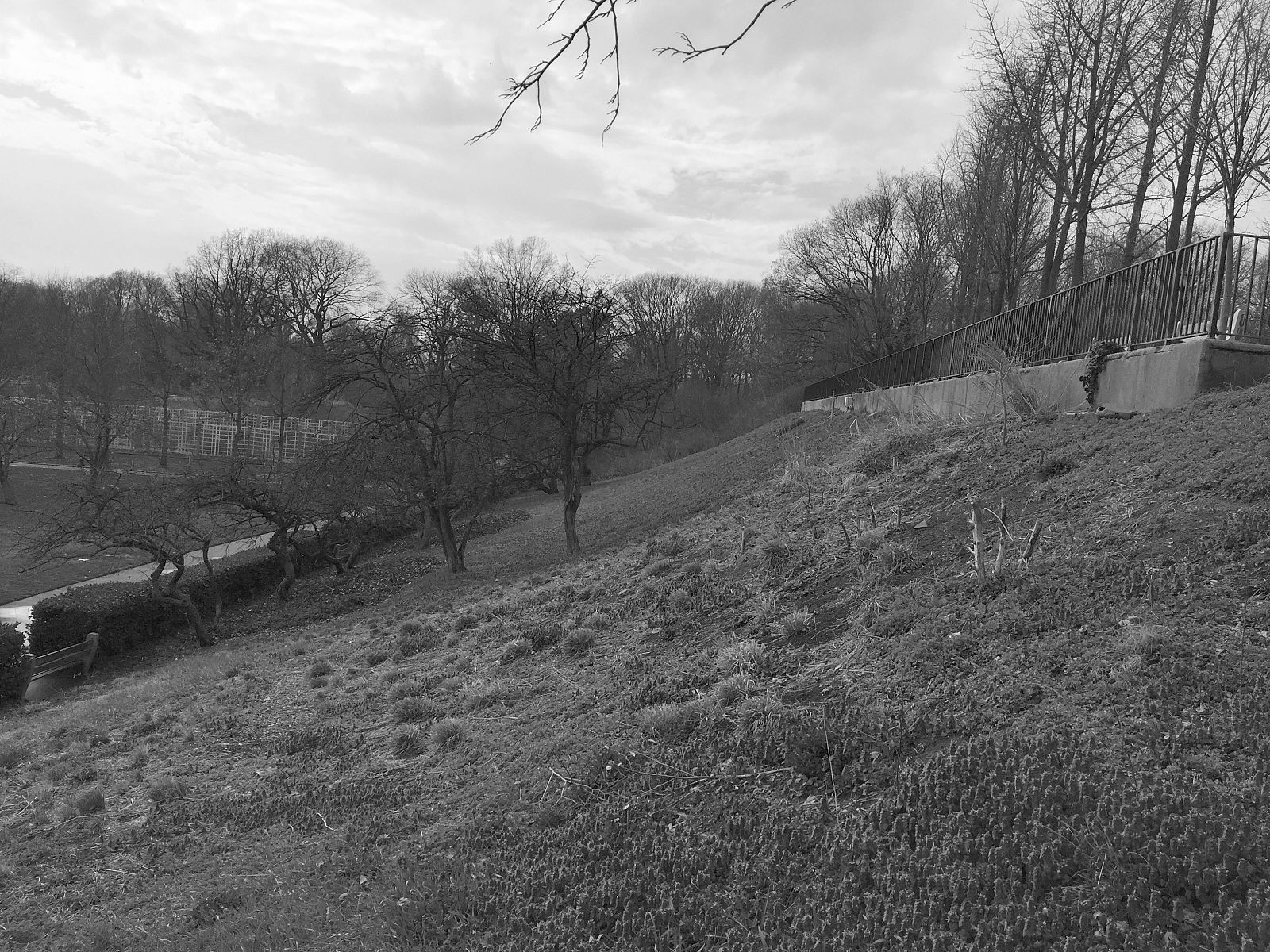Brooklyn Botanic Garden Robert W. Wilson Overlook

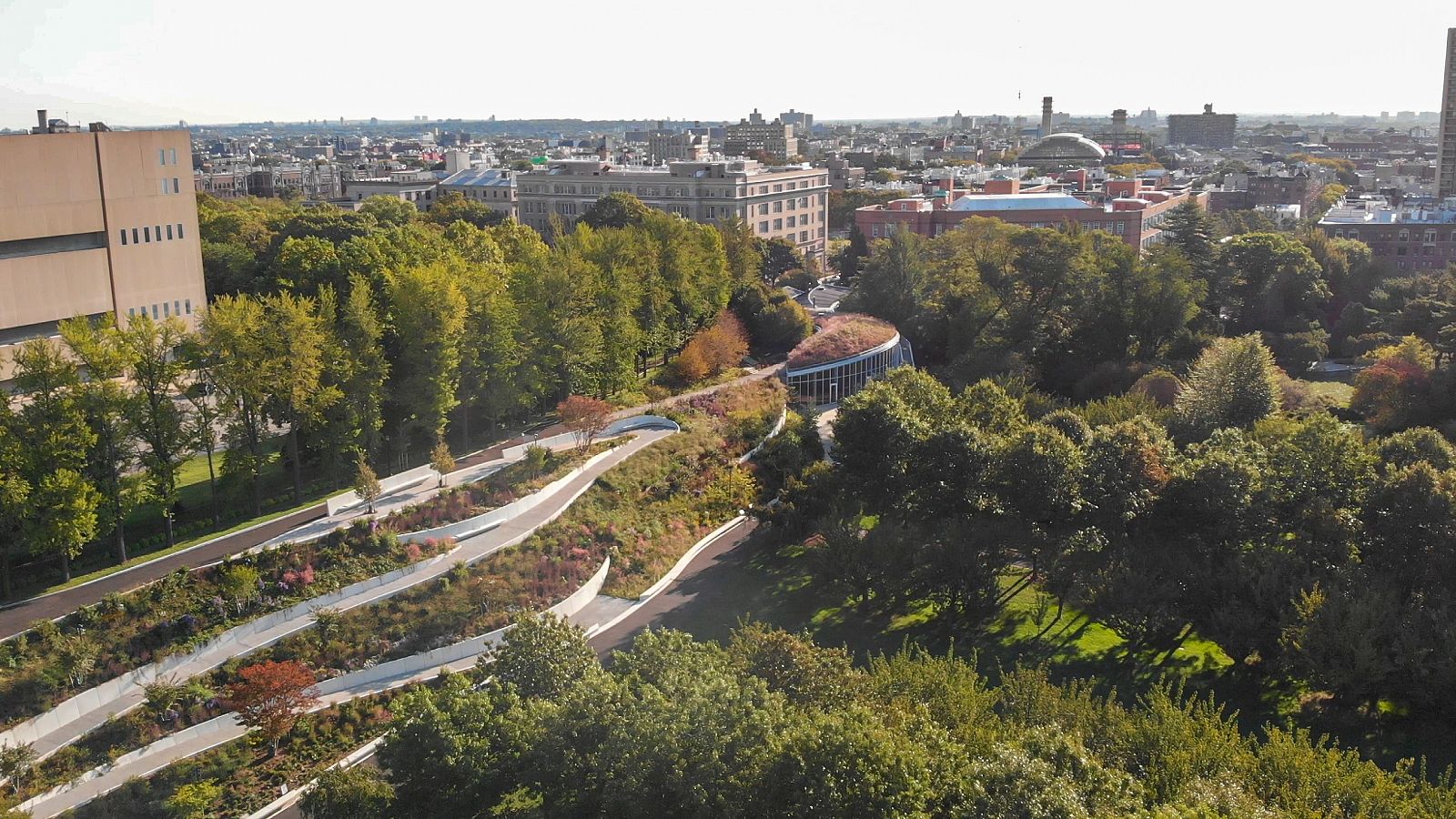

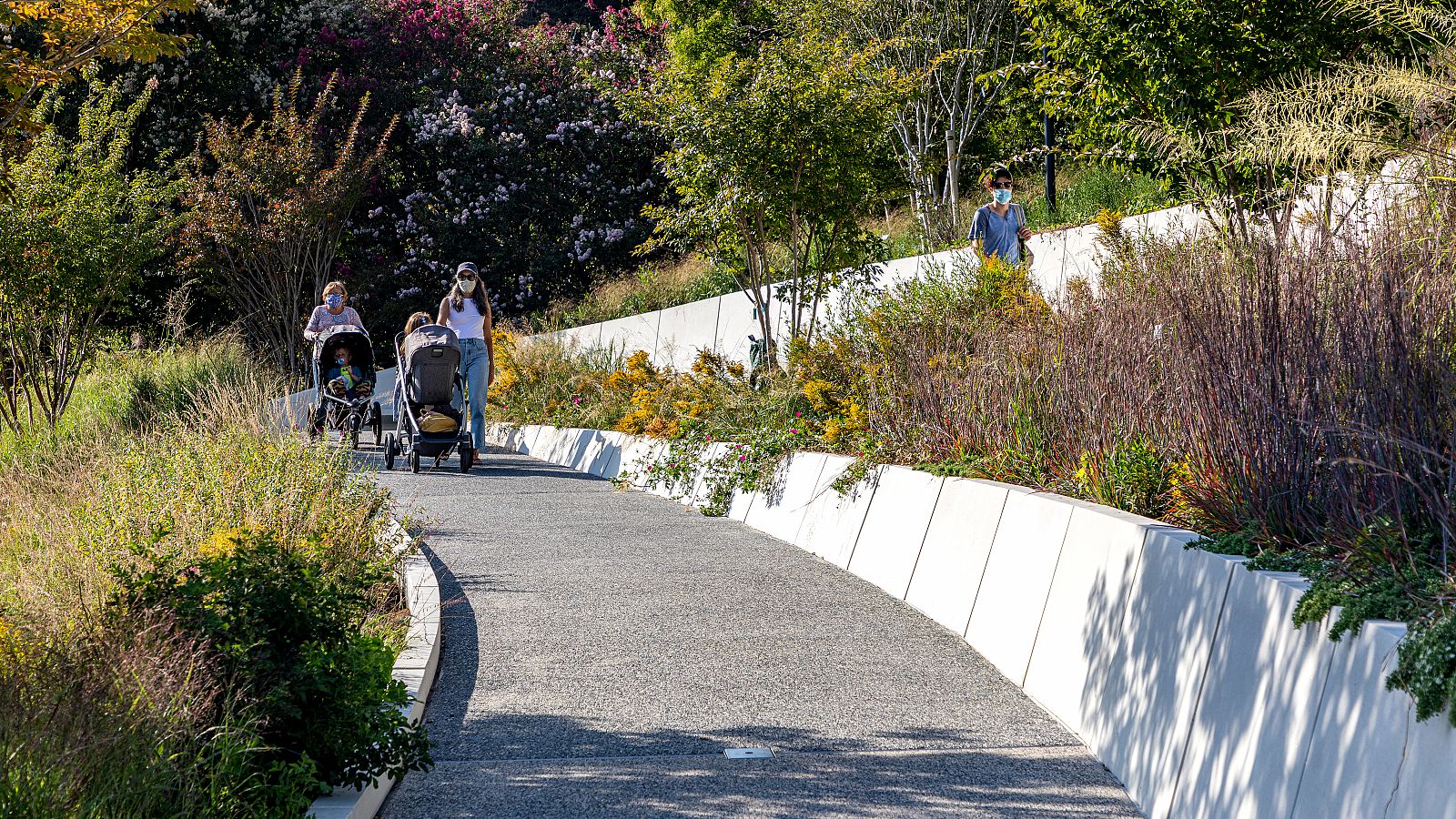


Subtly sloping ramps with sculptural retaining walls enhance the Garden's circulation by connecting the top and bottom of the hillside with a newly accessible route.
The Robert W. Wilson Overlook creates a new destination in New York City's Brooklyn Botanic Garden with stunning views over the Cherry Esplanade and Garden at large. Encompassing 1.25 acres of the Garden's most significant unprogrammed site, north of the Cherry Esplanade, the Overlook features a new garden of flowering crape myrtle trees and an immersive four-season planting design of ornamental grasses and perennials.
The Overlook encourages visitor engagement with this world-class collection through the creation of communal gathering spaces and new vantage points. Subtly sloping switchback ramps with sculptural retaining walls enhance the Garden's circulation by connecting the top and bottom of the hillside with a newly accessible route. This network of ramps, paths, walls, and landscape extends the inhabitable topography realized in the adjacent Diane H. and Joseph S. Steinberg Visitor Center, completed by Weiss/Manfredi in 2012.
The crape myrtle trees create a spectacular flower display of whites and pinks in late summer as a visual counterpoint to the spring Cherry Blossom Festival. The trees' beautiful exfoliating cinnamon bark and unique multistemmed form extend their visual appeal into the winter. The hillside planting is designed to choreograph a lush and varied display of botanical beauty. Grasses and perennials combine to form a robust, resilient ecosystem which will evolve over time, inviting a diversity of insect and butterfly life, and stabilizing the soil to prevent erosion.
The Overlook redefines the relationship between visitor and garden, creating an environment that introduces visitors to beautiful plantings across visual planes that rise from the ground to eye level. This adds to the cinematic experience of the Garden, with its ever-evolving landscape, and invites visitors to find new visual relationships and conversations between the diverse plantings.

The conceptual sketch (above) matches the curving form seen in the aerial view (left) as it transforms the previously undeveloped slope behind the Visitor Center.

The existing site (above) provided inadequate access between the Cherry Esplanade and its upper pathway. The new route encourages visitor engagement with the Garden's expansive collection of herbs, flowers, wild grasses, and crape myrtles.

The Overlook questions New York City’s most efficient design for accessibility and tranforms an eroding 24-foot-high slope into an unfolding 600-foot journey.
